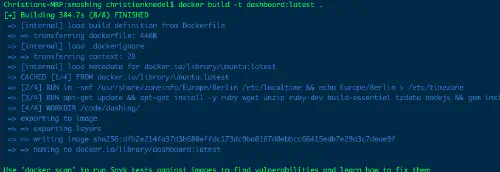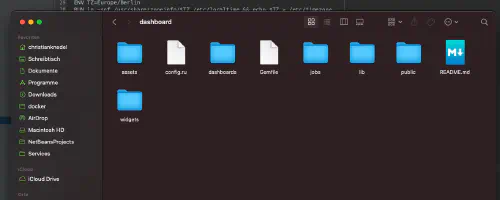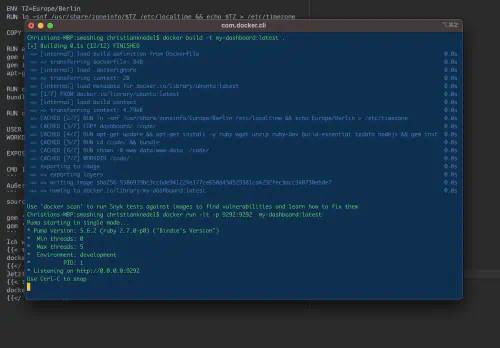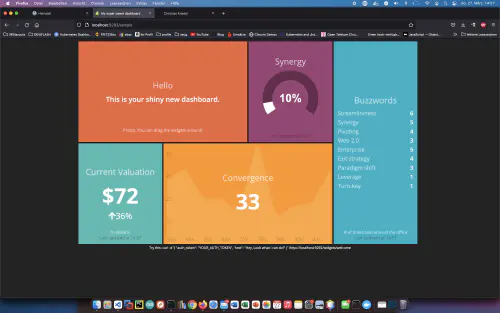Soprattutto nell’era Corona, con il lavoro decentralizzato, le informazioni aggiornate sono molto richieste in tutte le sedi. Io stesso ho già impostato innumerevoli sistemi informativi e vorrei presentare un ottimo software chiamato Smashing.Speaker: https://smashing.github.io/Das Il progetto Smashing è stato originariamente sviluppato con il nome di Dashing dalla società Shopify per la presentazione di cifre aziendali. Ma ovviamente non si possono mostrare solo le cifre degli affari. Sviluppatori di tutto il mondo hanno sviluppato Smashing tiles, i cosiddetti widget, per Gitlab, Jenkins, Bamboo, Jira, ecc., vedi:https://github.com/Smashing/smashing/wiki/Additional-WidgetsDoch come ci si lavora?
Passo 1: creare l’immagine di base
Per prima cosa, creo una semplice immagine Docker che include già Ruby e Dashing.
$ mkdir dashing-project
$ cd dashing-project
$ mkdir dashboard
$ vim Dockerfile
From ubuntu:latest
ENV TZ=Europe/Berlin
RUN ln -snf /usr/share/zoneinfo/$TZ /etc/localtime && echo $TZ > /etc/timezone
COPY dashboard/ /code/
RUN apt-get update && apt-get install -y ruby wget unzip ruby-dev build-essential tzdata nodejs && \
gem install smashing && \
apt-get clean
Poi creo l’immagine Docker con questo comando:
$ docker build -t my-dashboard:latest .
Passo 2: Creare il cruscotto
Ora posso creare una nuova dashboard con il seguente comando:
$ docker run -it -v /path/to/my/dashing-project:/code my-dashboard:latest smashing new dashboard
Molto bene! Ora devo aggiornare nuovamente il Dockerfile. Il nuovo contenuto è questo:
From ubuntu:latest
ENV TZ=Europe/Berlin
RUN ln -snf /usr/share/zoneinfo/$TZ /etc/localtime && echo $TZ > /etc/timezone
COPY dashboard/ /code/
RUN apt-get update && apt-get install -y ruby wget unzip ruby-dev build-essential tzdata nodejs && \
gem install smashing && \
gem install bundler && \
apt-get clean
RUN cd /code/ && \
bundle
RUN chown -R www-data:www-data /code/
USER www-data
WORKDIR /code/
EXPOSE 3030
CMD ["/usr/local/bin/bundle", "exec", "puma", "config.ru"]
Inoltre, anche il file Gemfile nella cartella “dashboard” deve essere adattato:
source 'https://rubygems.org'
gem 'smashing'
gem 'puma'
Ripeto il comando di costruzione:
$ docker build -t my-dashboard:latest .
$ docker run -it -p 9292:9292 my-dashboard:latest
Questa è la base di un buon sistema informativo. È possibile personalizzare tutto il colore, gli script e i widget.



